With many states remaining under stay-at-home advisement, liability attorneys have delayed various in-person actions, including depositions. It’s not easy to depose a witness while maintaining six feet of distance, especially if exhibits need to be exchanged. And any fan of courtroom drama knows that attorneys have honed their deposition skills in person, making virtual platforms less preferable. With millions of dollars in indemnity possibly at stake from a single lawsuit, attorneys are understandably reluctant to move away from practiced methods of conducting discovery.
A review of a Milliman database of defense attorney invoices1 allows us to quantify this delay. Attorneys attended 80% fewer depositions in the second half of March, contributing to an overall reduction in attorney fees of 6% to 7% for the month.2 However, by the end of April, attorneys had become more comfortable with virtual depositions, allowing them to attend 20% more depositions than when April began. Deposition length also increased as attorneys broadened their list of virtual deponents. But related activity (such as preparation time) included on the attorney invoices during the last week of April did not yet show signs of a continued increase in deposition activity.
A decline in number and length of depositions
Prior to March 15, defense attorneys attended about 47 depositions weekly for every 1,000 open claims. In the second half of March, this decreased to about nine per week, an 80% decline. The depositions that remained on the calendar were typically conducted virtually (more on this in a later article).
In addition to the decline in number, deposition length declined 25%, from an average of 3.2 hours to 2.4 hours. While many attorneys chose not to conduct depositions during this time period, those who did appear to have chosen candidates expected to be of shorter duration as they adjusted to a virtual platform. By the end of April, attorneys (and others) had grown more comfortable with virtual interactions and had had the opportunity to work through any technological issues. Having adjusted to a new medium, attorneys were willing to schedule somewhat more complex depositions virtually. Average deposition length increased to 2.8 hours during this time.
Figure 1: Depositions per 1,000 open claims
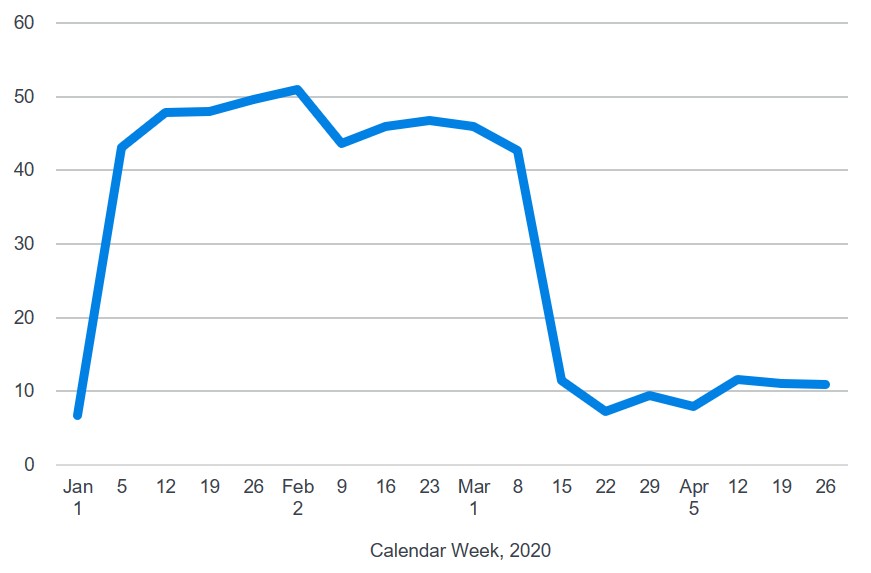
The count and length of depositions is based on the text mining of line items to determine the billed service. A line item description of “attend deposition of plaintiff’s expert” or “deposed Dr. Smith” are two among hundreds of variously worded descriptions indicating a deposition. The amount of billed time on the invoice provides the length of the deposition.
Close to a third of depositions in late March and early April lasted an hour and a half or less. Typically, depositions of this length make up only a fifth of the total. Almost half of all depositions last longer than three hours and 15% longer than five hours. During the second half of March, these longer depositions became rare, with only 25% longer than three hours and 5% longer than five hours. Full-day depositions, while never common, were almost unheard of during this time period. Attorneys may be waiting until they can conduct full-day depositions in person or choosing to conduct them remotely in multiple segments.
Figure 2: Average deposition length, in hours
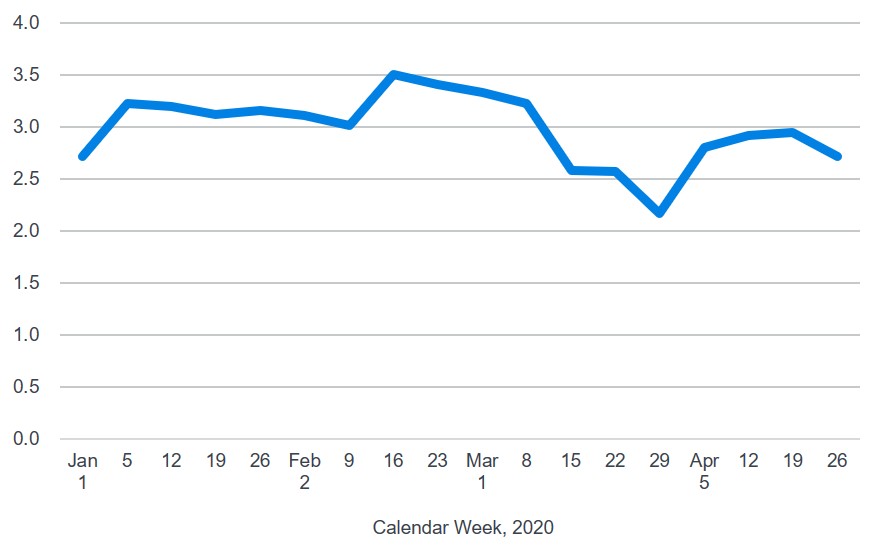
The chart below shows the portion of depositions lasting less than an hour and a half increasing from about one fifth to one third of depositions, then declining to about one fifth again. But the actual number of these shorter depositions remains largely unchanged each week in April. Rather it’s an increase in the number of lengthier depositions that drives the change in percentages below. These lengthier depositions also drive the increase of 20% in deposition count during April.
Figure 3: Distribution of deposition length
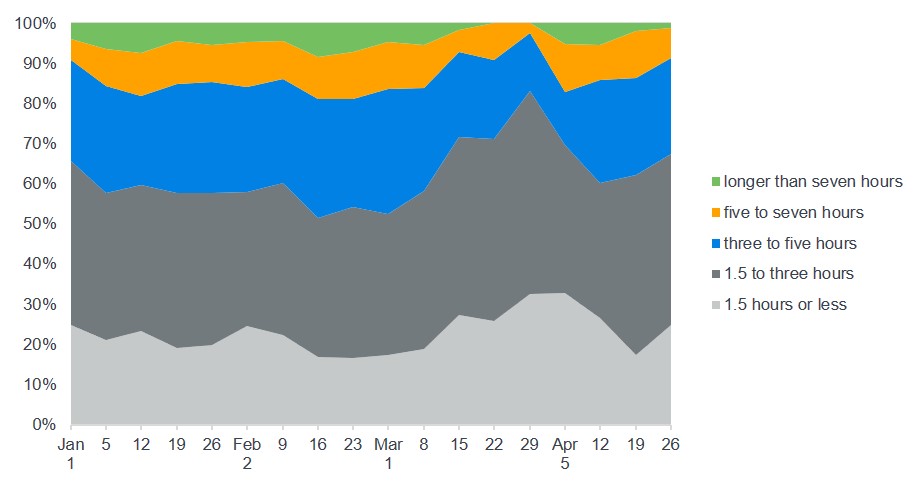
Observations by witness type
We can group deponents broadly into six categories: plaintiff, plaintiff’s family members, defendant, fact witness, and expert - either for the plaintiff or for the defense. Attorneys tend to depose the plaintiff and defendant toward the beginning of the discovery phase. Expert witness depositions typically end the discovery phase of a lawsuit. However, in the chart below, we measure the age of the claim from the beginning of the “deposition process.” We are distinguishing the deposition process from discovery more broadly because written discovery and document production can presumably continue in the same manner under social distancing unlike much deposition work.
Figure 4: Deponents by witness type and age of claim
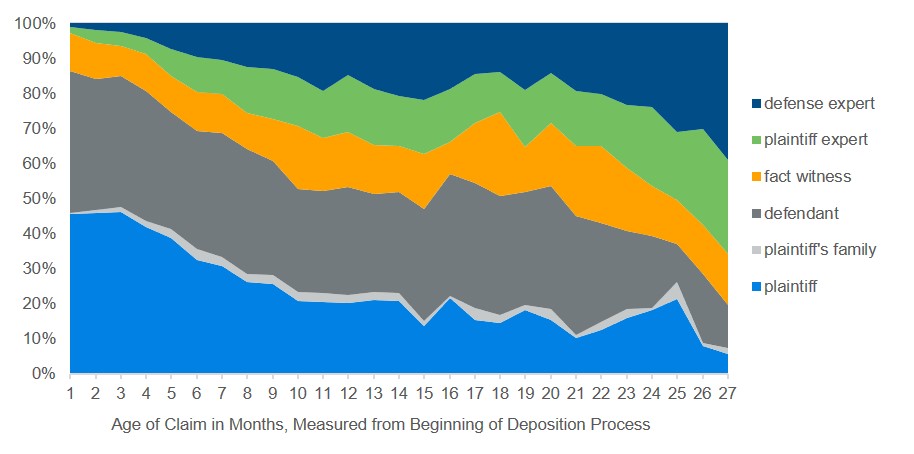
Depositions of the plaintiff are lengthier than those of other witnesses, lasting on average 3.7 hours. The shortest are the plaintiff’s family members and fact witnesses, lasting on average 2.8 hours and 2.5 hours, respectively. Defendants and expert witnesses are closer to the overall average of 3.3 hours.
Figure 5: Average length of deposition, in hours
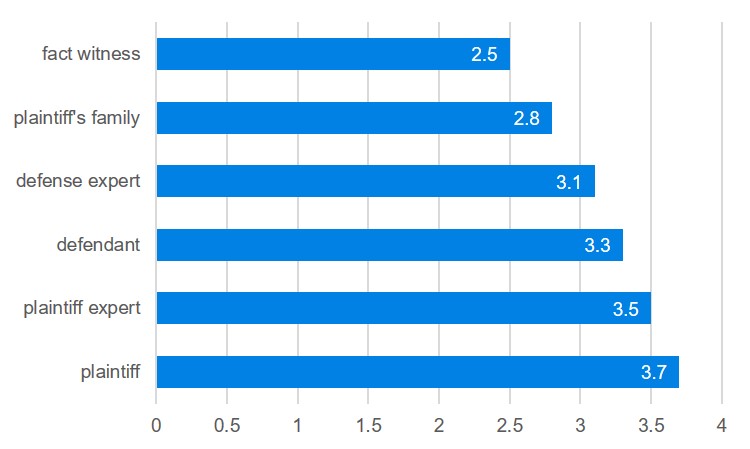
Because depositions of the plaintiff’s family and fact witnesses are shorter and perhaps easier to conduct virtually for other reasons, we’d expect more of these to go forward under social distancing. This shift occurs but not until April, perhaps suggesting the depositions taken in late March were previously scheduled and later moved to virtual platforms. Depositions initially scheduled for later in the calendar may also have been moved to April if identified as good candidates for a virtual platform. The pie charts below show this shift away from the plaintiff and defendant and toward other witness categories.
All witness types except defendants have contributed to the decline in deposition length after March 15. Those whose depositions were shorter to begin with decreased in length more than others. While the average length of expert depositions decreased by 16% and plaintiffs by 21%, fact witnesses decreased by 26% and plaintiff’s family members by 42%.
Figure 6: Deponents by witness type
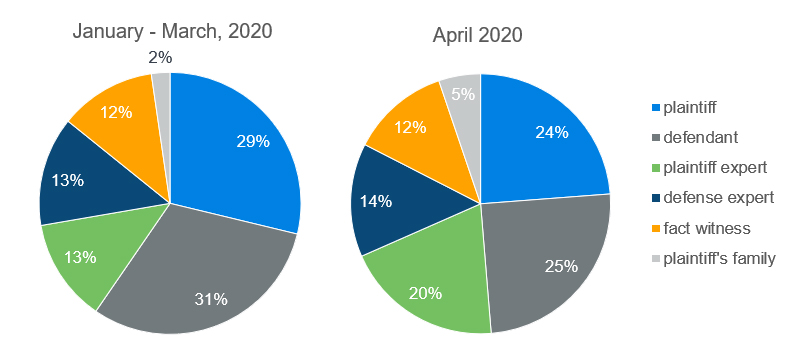
Figure 7: Change in average length of deposition before and after March 15, 2020
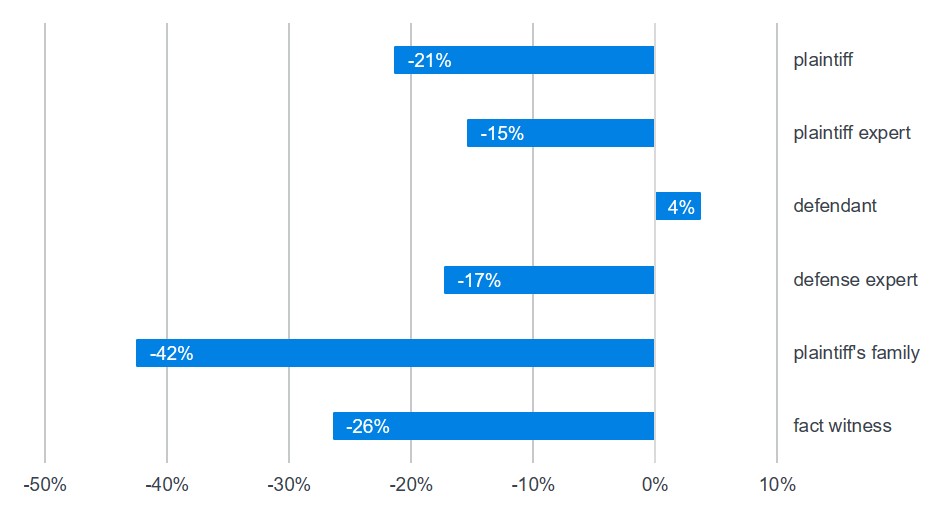
Future deposition activity
With the number of depositions up slightly by the end of April, and the length of depositions more so, it’s natural to wonder if the pattern of increasing depositions will continue. The Milliman database of attorney invoices provides some insight on this. Just as we can text mine the invoices for depositions themselves, we can text mine more broadly for references to future deposition scheduling, such as “draft notice of deposition of plaintiff” or “analyze issues that could arise in deposition of Dr. Smith.” We refer to the first such reference to a deposition for a given claim as the beginning of the deposition process.3
For every 1,000 open claims, about 13 will enter the deposition process in any given week. This fell to eight per week in April as attorneys were reluctant to plan depositions in the uncertainty of this time. Even as some attorneys have gotten comfortable with virtual platforms and certain states have permitted businesses to re-open, there is no increase in this metric by month-end. Signs of first deposition activity were less at the end of April than at the beginning.
It’s impossible to say when signs of future depositions will emerge. Attorneys may continue to gain comfort with virtual platforms and expand their use, encouraging them to move other claims into the deposition process. At some point, we expect the use of virtual platforms will plateau as attorneys insist on conducting the most crucial depositions in person.
Figure 8: Claims entering deposition stage in 2020, per 1,000
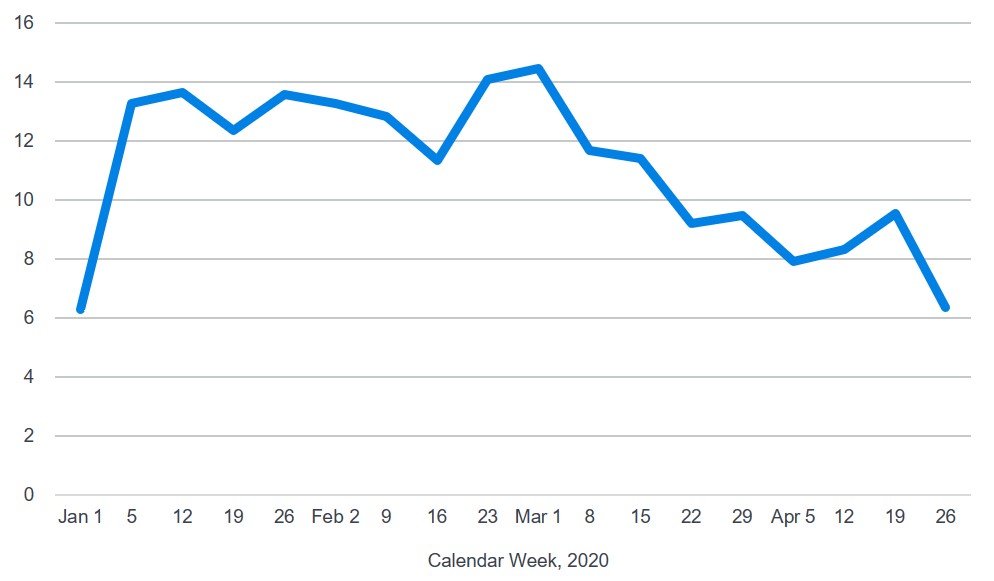
Insurers should discuss with their defense attorneys to assess the advantages and disadvantages of virtual depositions. It’s possible that both indemnity and defense costs may be reduced by continuing to move claims through discovery under virtual platforms. But are certain depositions best taken in person? Can virtual depositions save money and time without compromising the outcome, not just now but in the future? As we continue to investigate the Milliman database, we hope to glean insights to help answer questions such as these.
1Database compiled and maintained by Milliman Datalytics-Defense.
2See https://us.milliman.com/en/insight/COVID19%20at%20the%20courthouse%20door%20Attorney%20invoices%20begin%20to%20show%20the%20impact%20of%20the%20novel%20coronavirus
3More precisely, we consider the deposition process to begin at the first deposition activity for the claim itself or for any related claim on the same case. It was using this definition of the deposition process that we measured the age of each claim from the beginning of the deposition process in the chart above.